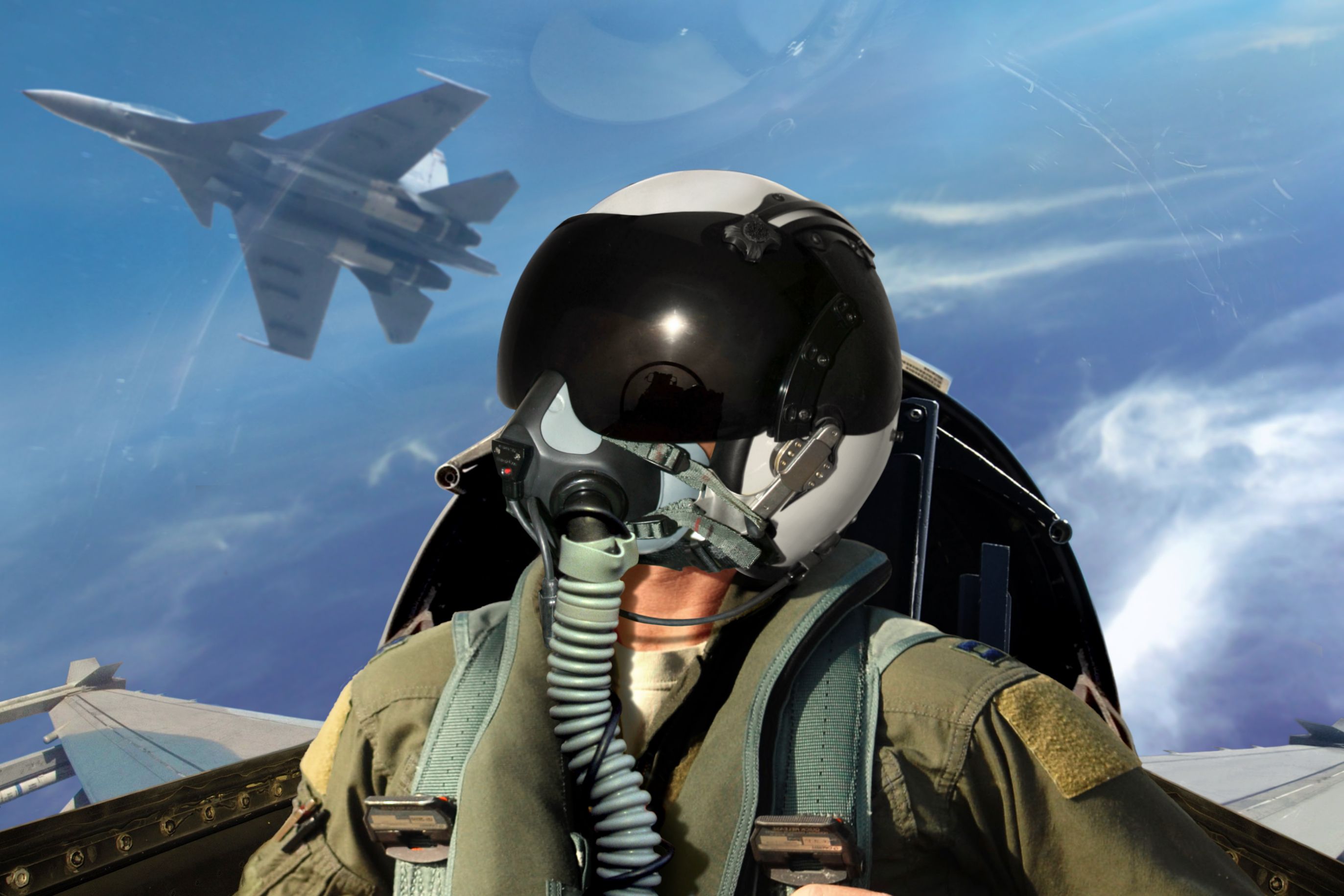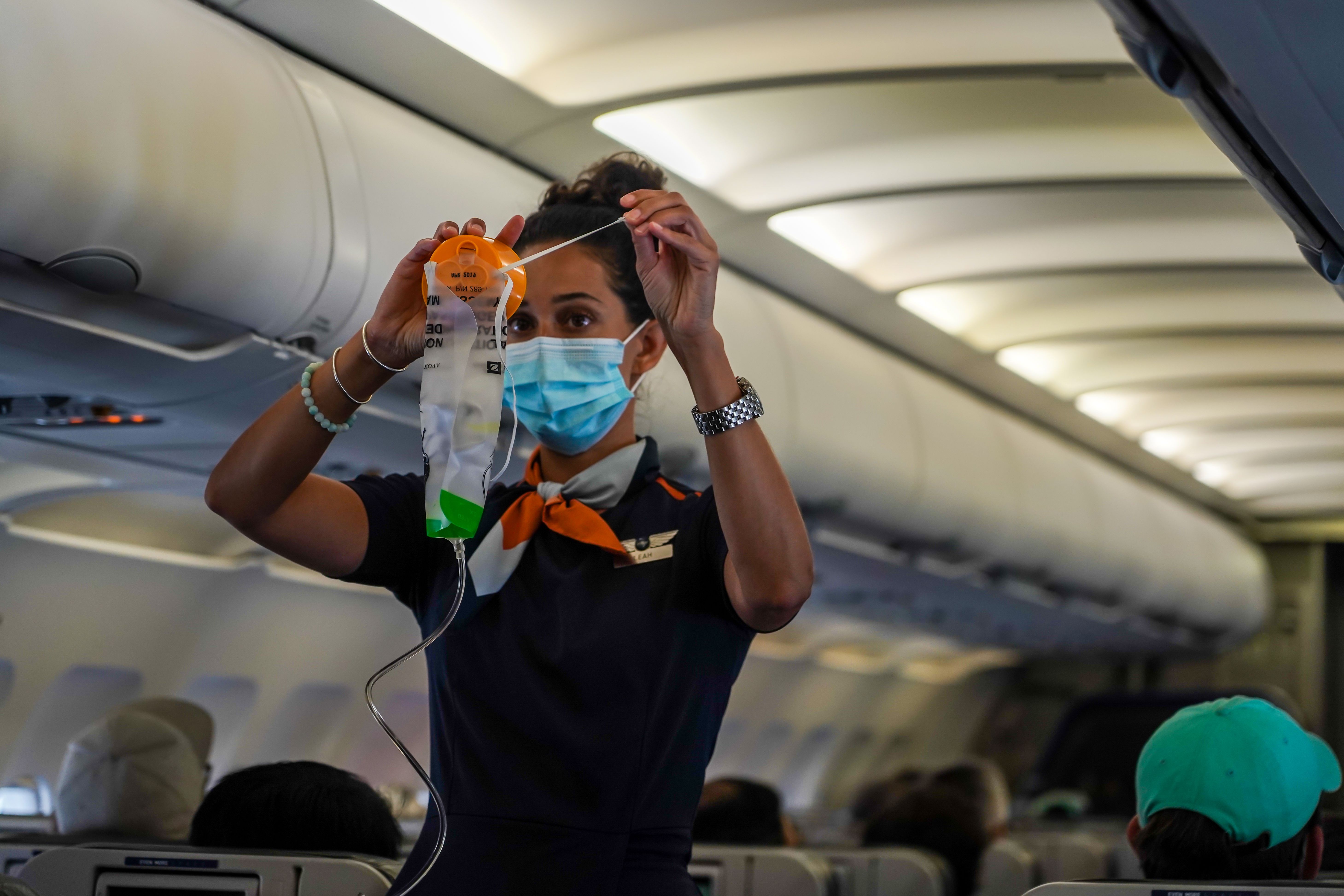Summary
- Oxygen masks are essential for fighter pilots at high altitudes to prevent hypoxia and maintain oxygen supply to the brain.
- The helmet and mask unit also serve as communication devices.
- The helmet protects pilots during maneuvers and ejection, shielding them from injury, extreme temperatures, high winds, and debris.
Fighter pilots always wear a helmet and mask unit for the entire duration of any flight. This is something we, of course, expect to see in military fighter aircraft – but we never would for civilian flights. Why is this? There are several reasons – and it's not just about air supply.
Masks supply oxygen
The most obvious reason for using masks is to supply oxygen. The mask provides the pilot with a constant, pressurized flow of mixed oxygen and air. At high altitudes, we are unable to breathe as normal. This is primarily due to the lower partial air pressure affecting the ability to take oxygen into the lungs.
Without pressurization and the ability to breathe oxygen, pilots would quickly start to suffer from hypoxia (low levels of oxygen in body tissues - and, critically, a reduced oxygen supply to the brain). Hypoxia is a serious situation that can quickly lead to unconsciousness or death - but before that, pilots would suffer poor judgment and confusion, not great in a fast jet.
Want answers to more key questions in aviation? Check out the rest of our guides here.
Easily breathing air starts to be an issue at altitudes over 10,000 feet, which is why oxygen masks are deployed for passengers in the event of depressurization. Additionally, all aircraft immediately descend to 10,000 feet or lower in such a case.
Civilian aircraft cabins are pressurized to allow breathing during flight. Military fighter aircraft are also pressurized, but quite differently. They usually use dynamic (rather than static) pressurization, with the pressurization level changing with altitude. This is generally to a higher altitude than commercial aircraft, and breathing support is always needed at higher altitudes. The additional effects of high G-forces when flying will make breathing even harder. The forced flow of oxygen and air to the lungs helps this.
Communication is built into the helmet
The helmet and mask unit contains the microphone, headphones, and connections necessary for ground and in-air communication. This is not something that fighter pilots want to be connecting or adjusting when concentrating on flying, so a stable system like this makes sense. There is usually no alternative for this, so pilots would not want to remove the unit, even when on the ground.
Protection in the cockpit and when ejecting
The mask and helmet also provide vital protection for the pilot. In the cockpit, it protects the head from injury when accelerating or undertaking rapid or high g-force maneuvers. The visor, of course, provides essential eye protection.
It is also part of the vital precautions if the pilot has to eject; the helmet will help protect from the dangers of ejection. This is not just in relation to impact with the cockpit or ground - it will also protect from high winds, extreme temperatures, and potential debris.
The mask continues to provide access to the oxygen supply after ejecting. This is vital, especially for high-altitude ejection, and the helmet is connected to a self-contained separate system that is used after ejecting from the aircraft.
Get the latest aviation news straight to your inbox: Sign up for our newsletters today
The helmet and mask are vital parts of a fighter jet pilot's equipment. Feel free to discuss this or other equipment further in the comments section below.




